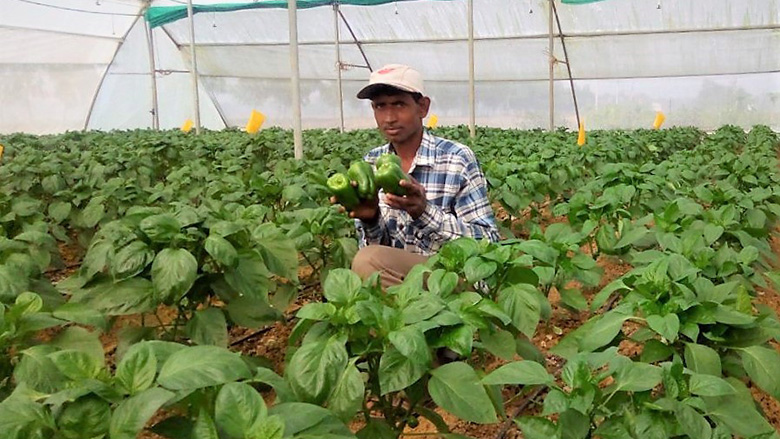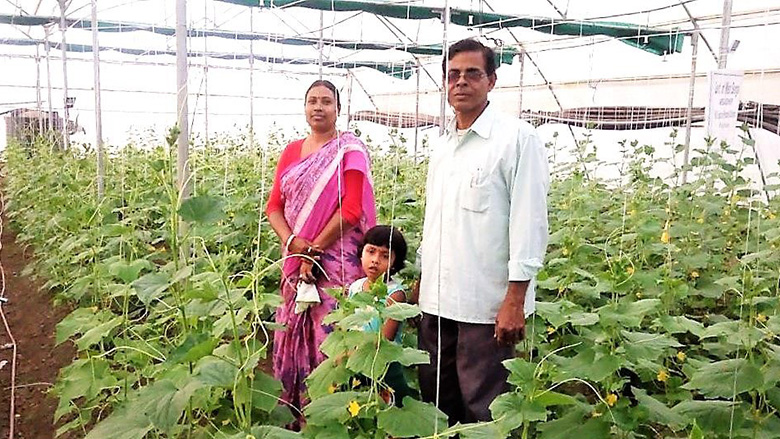Sahadeb Das farms a tiny patch of land in Dhurkhali – a remote village in West Bengal’s Howrah district. With virtually no access to irrigation, Sahadeb struggled to make a living off a single crop of paddy he grew during the Kharif (rainy) season, plus an occasional crop of vegetables; but the scale was small and earned him little or no profits. During the rest of the year, Sahadeb, like many other farmers in similar situations, was forced to take up other livelihoods to fend for his family.
Now, with irrigation water streaming into his parched 1.5-acre patch during the dry season, Sahadeb has reason to smile. He has diversified from just one paddy crop to include a variety of fruits and vegetables, which he grows throughout the year. The higher prices of his horticultural crops have more than doubled the earnings, rising from $900 to $1,850 per annum.
Sahadeb is not alone in his success. With irrigation newly-provided by the West Bengal government’s Accelerated Development of Minor Irrigation Project (ADMIP), other small and marginal farmers too have seen their incomes multiply manifold.
The Project, funded by the World Bank, seeks to boost agricultural productivity and profitability for 100,000 small and marginal farmers in the drought-prone regions of the state.
Increasing farm incomes with knowledge and technology
Farmers like Sahadeb have benefitted from the creation of minor irrigation structures such as ponds, tube wells and check dams. Those with adjacent parcels of land have been brought together into Water User Associations (WUAs) that operate these schemes and drive the efficient use of irrigation water through community participation. These WUA clusters have also attracted reputed agribusiness companies to demonstrate modern technological advancements such as high-yielding and low-water-consuming hybrid rice varieties, helping these clusters avail benefits of scale. Through such capacity building, farmers are learning to grow a variety of commercially viable crops using new technologies.
With these initial measures, Sahadeb has been able to grow a cornucopia of vegetables and fruits, including bananas, mangoes and pears – all on his 1.5 acres! As word of his success spread, the other farmers were curious and sought the project’s assistance.


